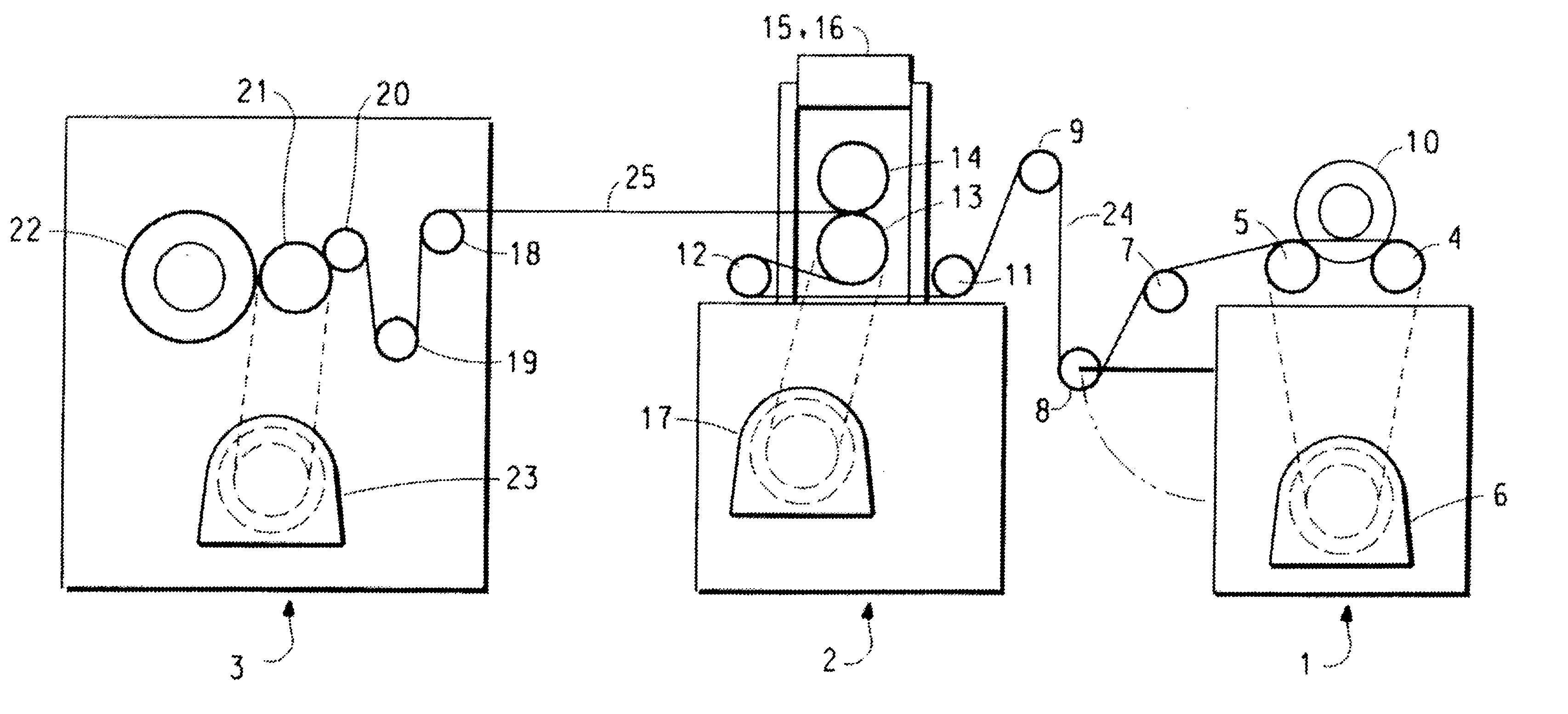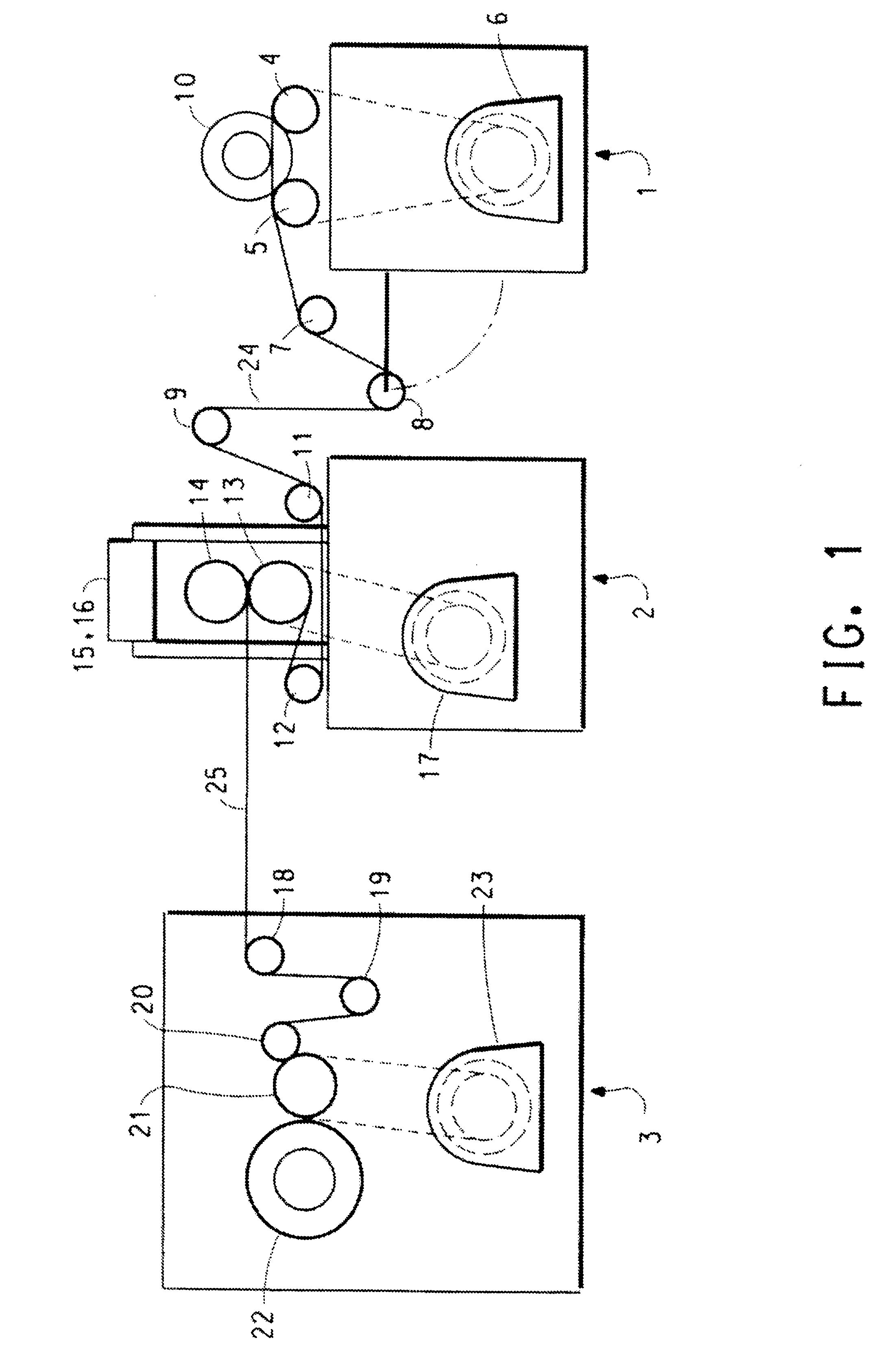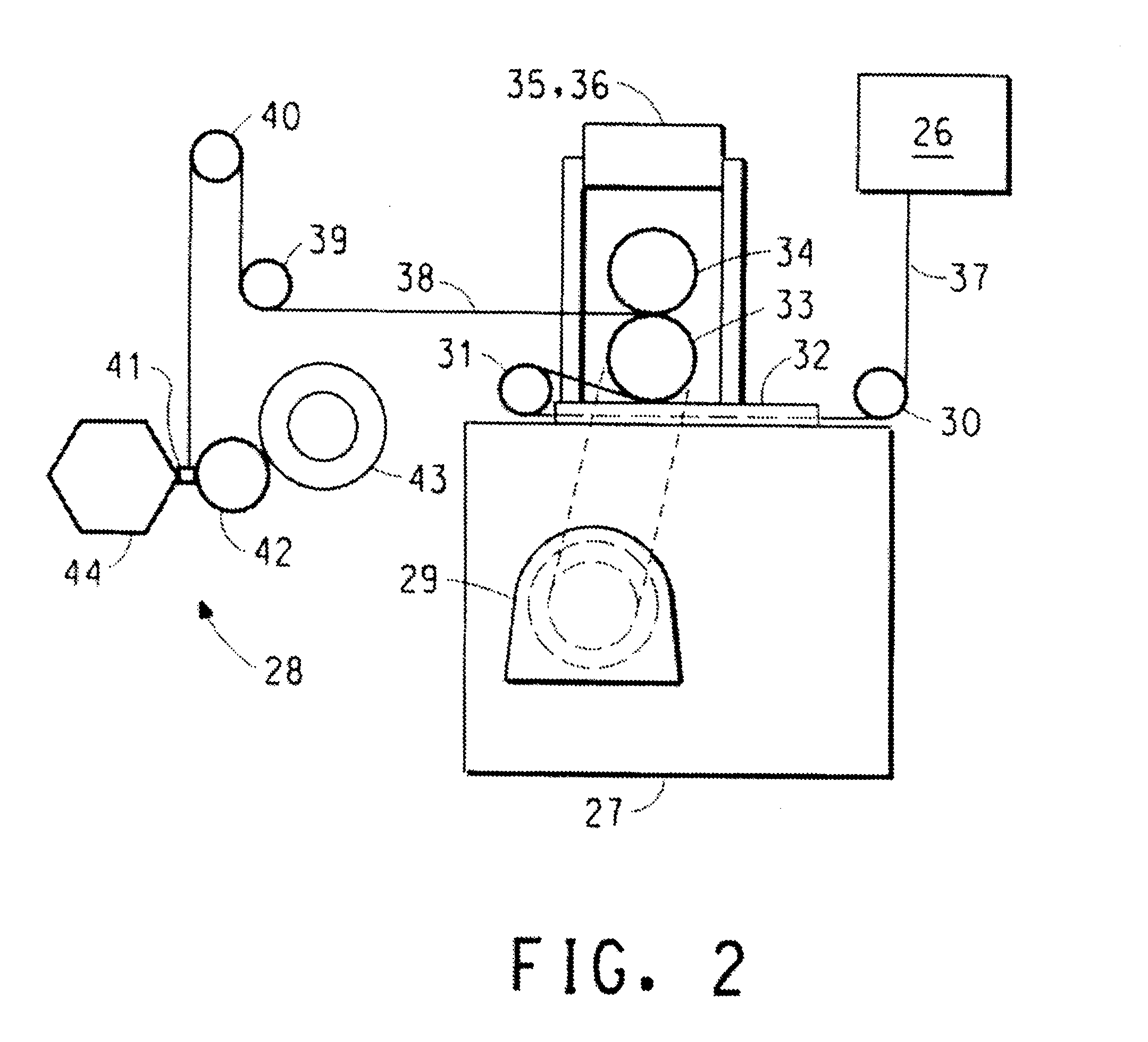Method for producing a shaped multifilament, non-thermoplastic, elastomeric yarn
- Summary
- Abstract
- Description
- Claims
- Application Information
AI Technical Summary
Benefits of technology
Problems solved by technology
Method used
Image
Examples
example 1
First, 2000 g of polytetramethylene ether glycol having a molecular weight of 2000 and 400 g of diphenyl methane diisocyanate (mole ratio of 1.60) were poured into a nitrogen-sealed stirring vessel and reacted at 90.degree. C., thereby giving a prepolymer (or "capped glycol"). Next, 699 g of this prepolymer was dissolved in 1288 g of dimethyl acetamide, following which 11 g of ethylenediamine as the chain extender and 1.6 g of diethylamine as the chain terminator were added so that the molar ratio of such amines to the prepolymer was 1.05. The resulting mixture was stirred at 80.degree. C. and reacted to give a polyurethane solution.
A stabilizer package including titanium dioxide was added and stirred into the polyurethane solution so as to give a weight ratio of 6%, based on polymer.
The number-average molecular weight of the polyurethane thus obtained was determined by gel permeation chromatography to be approximately 38,000 (polystyrene standard). The softening temperature of the ...
example 2
The polymer, process conditions, and apparatus were the same as in Example 1 except that hot-press roll 13 was changed to have a groove as shown in FIG. 4. The resulting modified yarn had a cross-sectional shape as shown in FIG. 3B.
example 3
When the apparatus was used between the spinning column and the windup as shown in FIG. 2, with a cylindrical (no groove) press roll, a pressure of 20 kg / cm2, a preheater temperature of 490.degree. C., and a hot press roll surface temperature of 230.degree. C., yarns having a modified cross-section as shown in FIG. 3A were produced.
PUM
| Property | Measurement | Unit |
|---|---|---|
| temperature | aaaaa | aaaaa |
| temperature | aaaaa | aaaaa |
| temperature | aaaaa | aaaaa |
Abstract
Description
Claims
Application Information
 Login to View More
Login to View More - R&D
- Intellectual Property
- Life Sciences
- Materials
- Tech Scout
- Unparalleled Data Quality
- Higher Quality Content
- 60% Fewer Hallucinations
Browse by: Latest US Patents, China's latest patents, Technical Efficacy Thesaurus, Application Domain, Technology Topic, Popular Technical Reports.
© 2025 PatSnap. All rights reserved.Legal|Privacy policy|Modern Slavery Act Transparency Statement|Sitemap|About US| Contact US: help@patsnap.com



